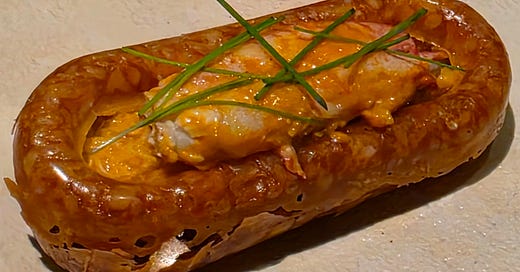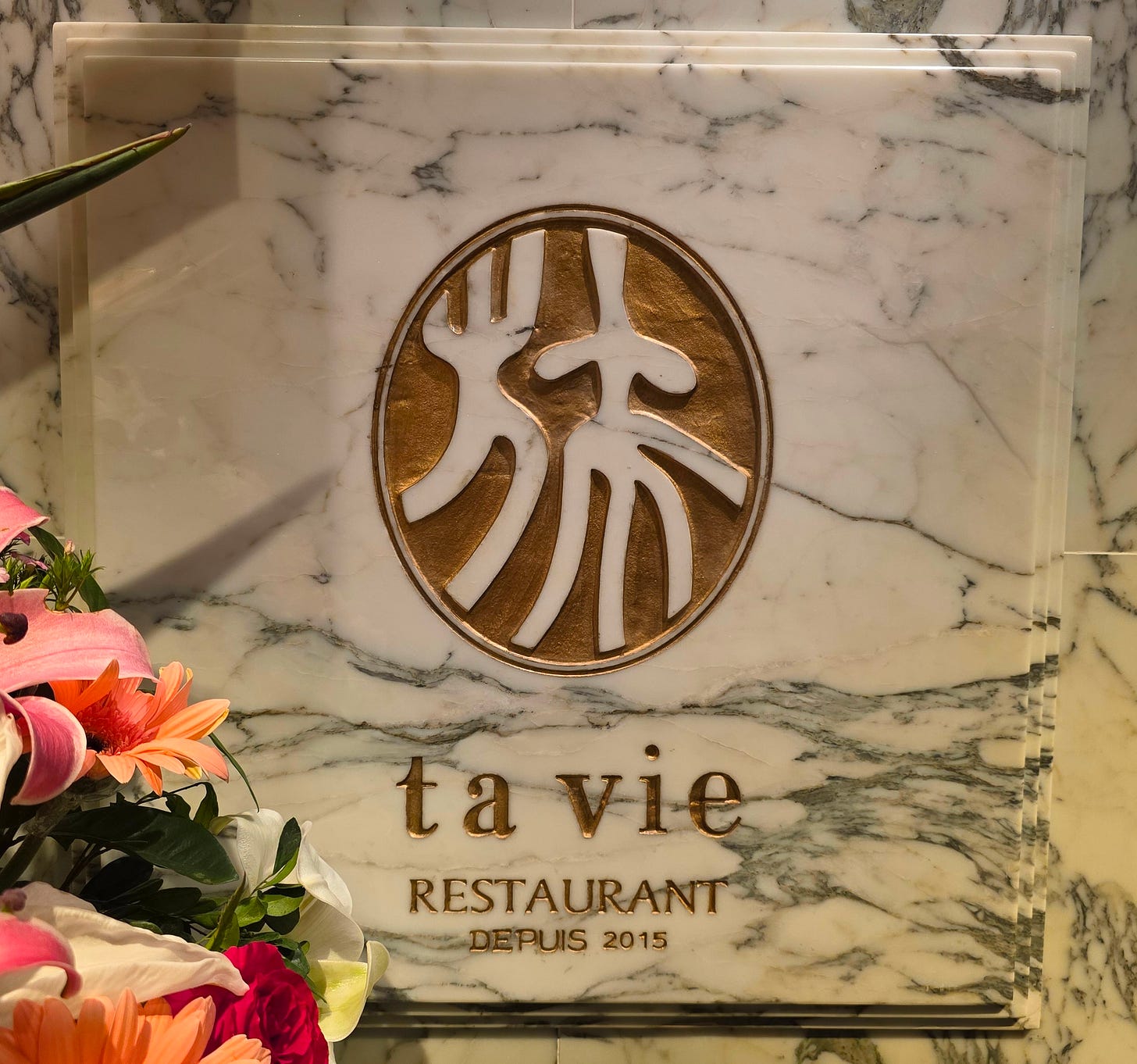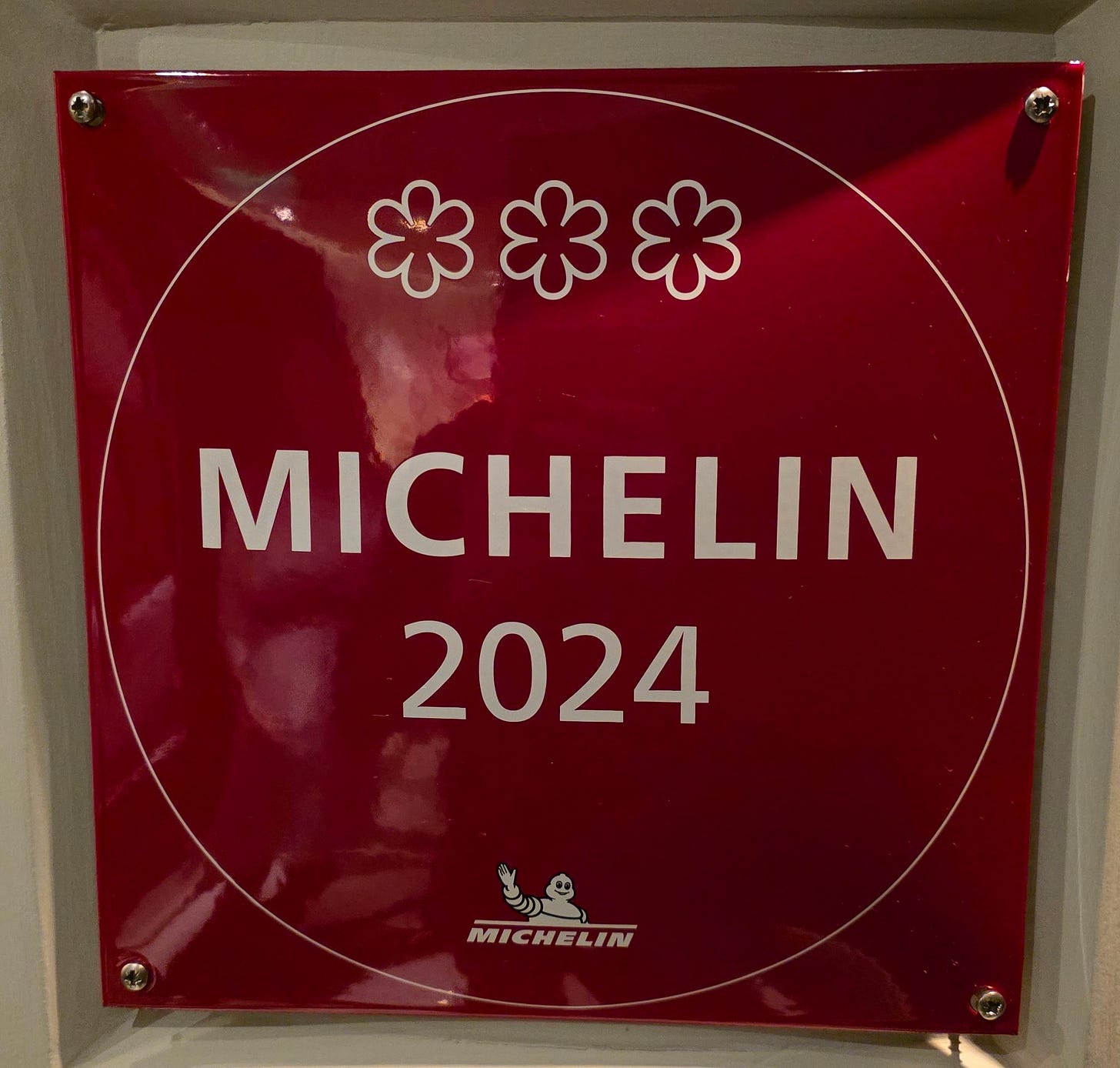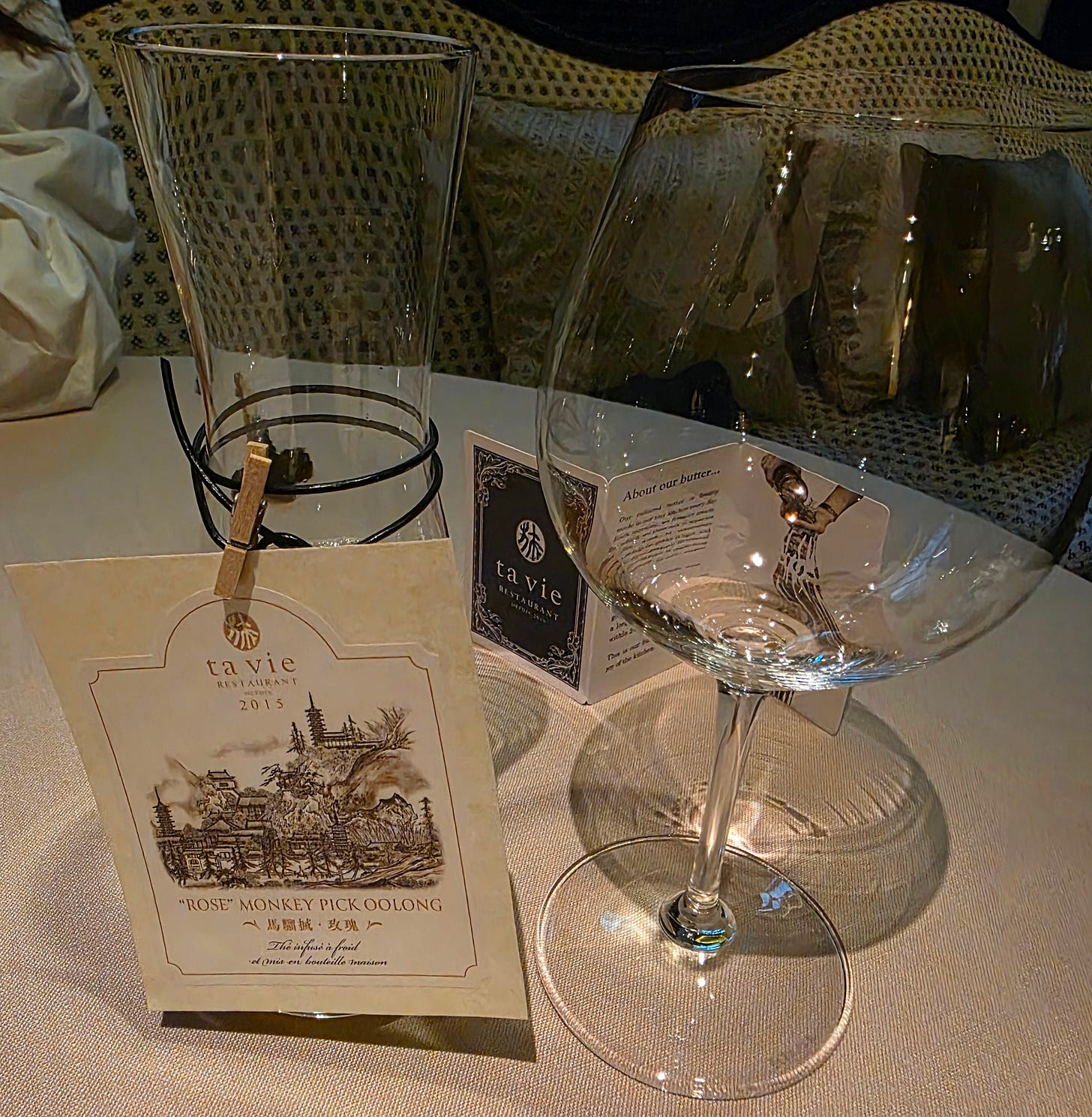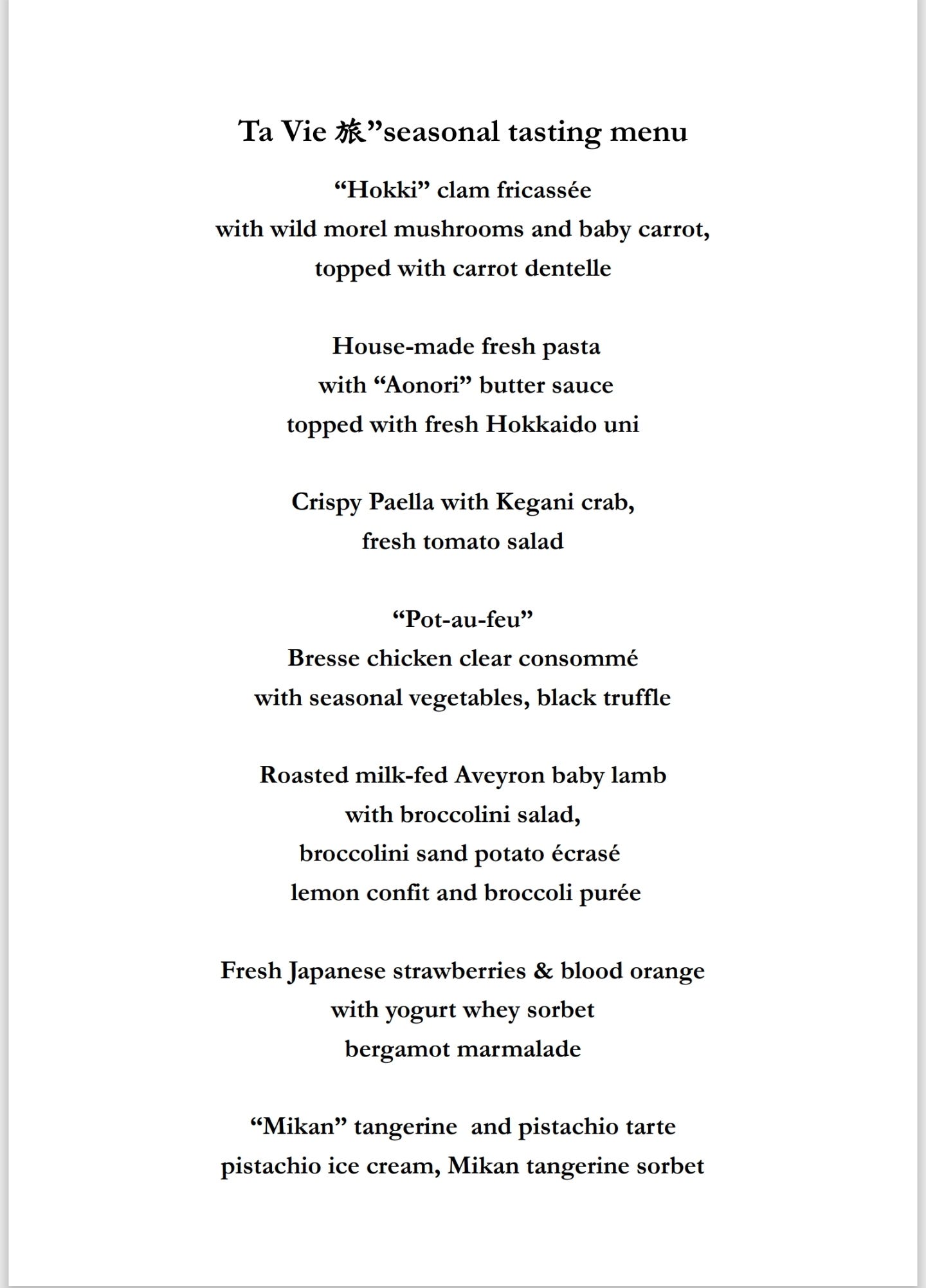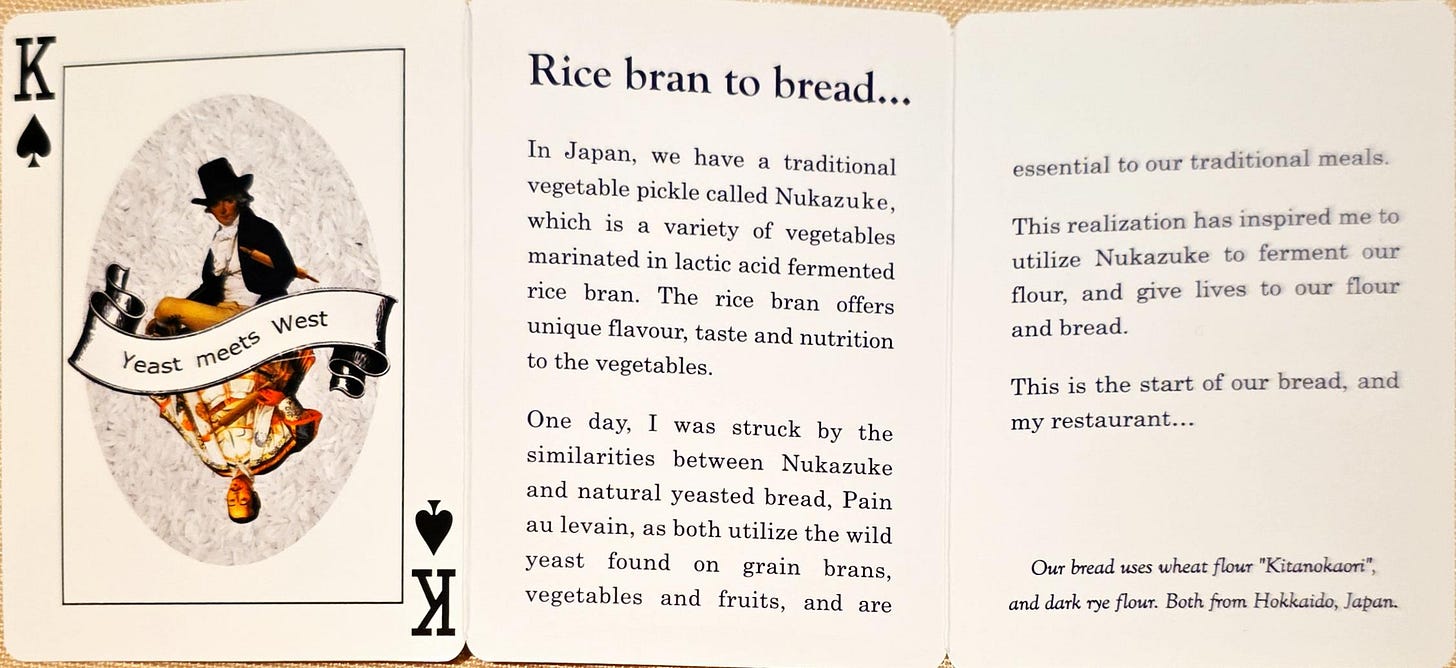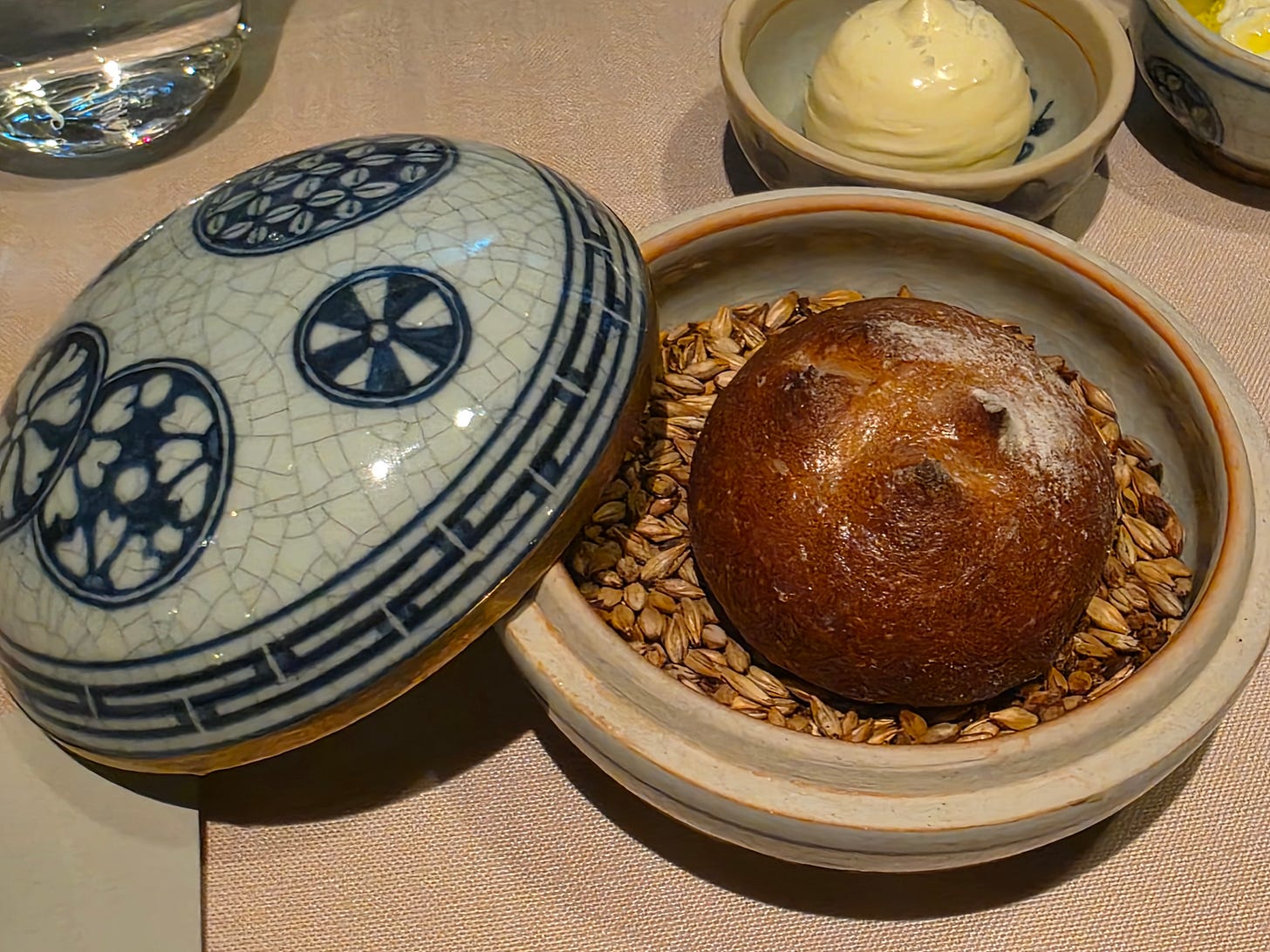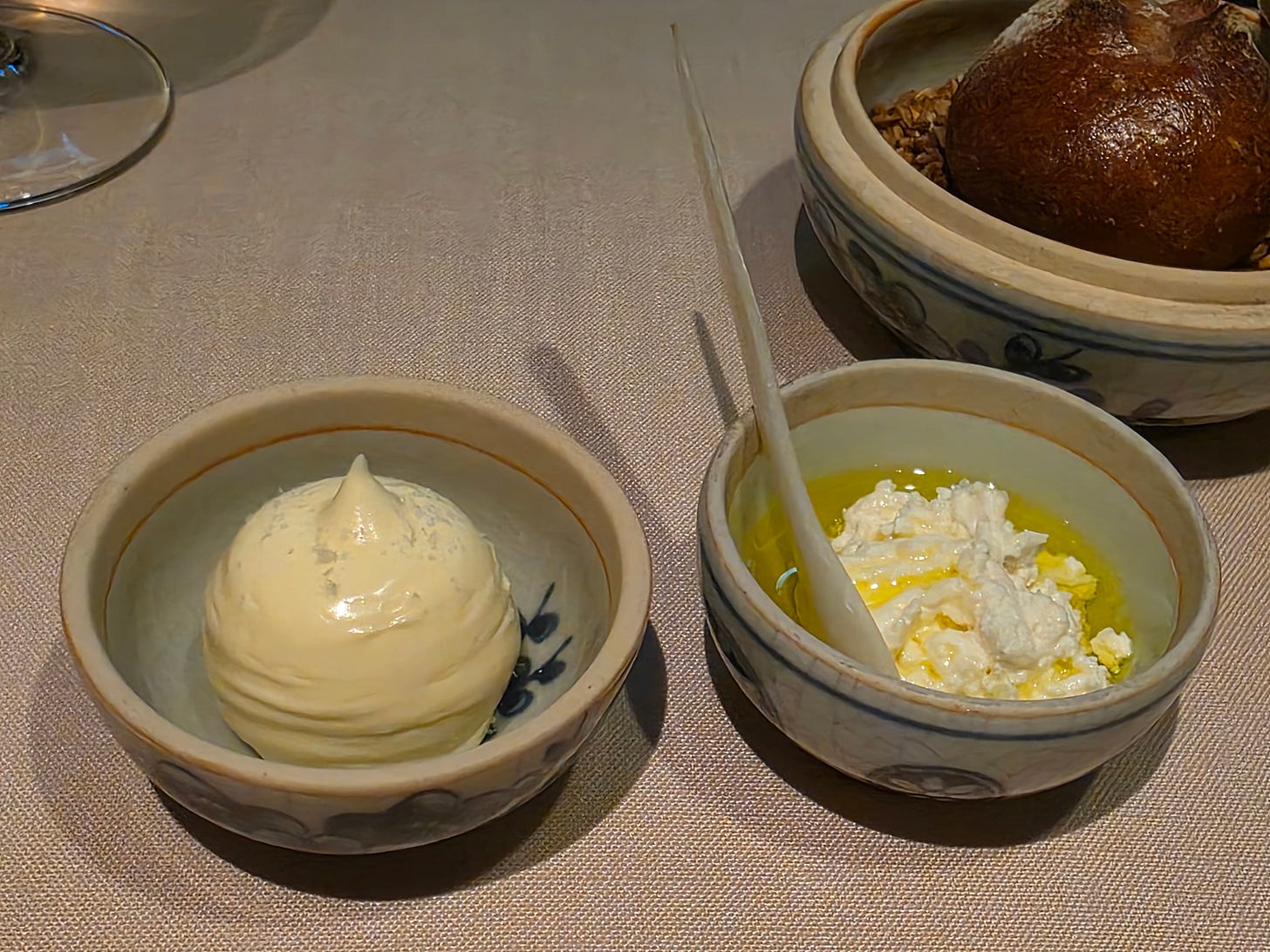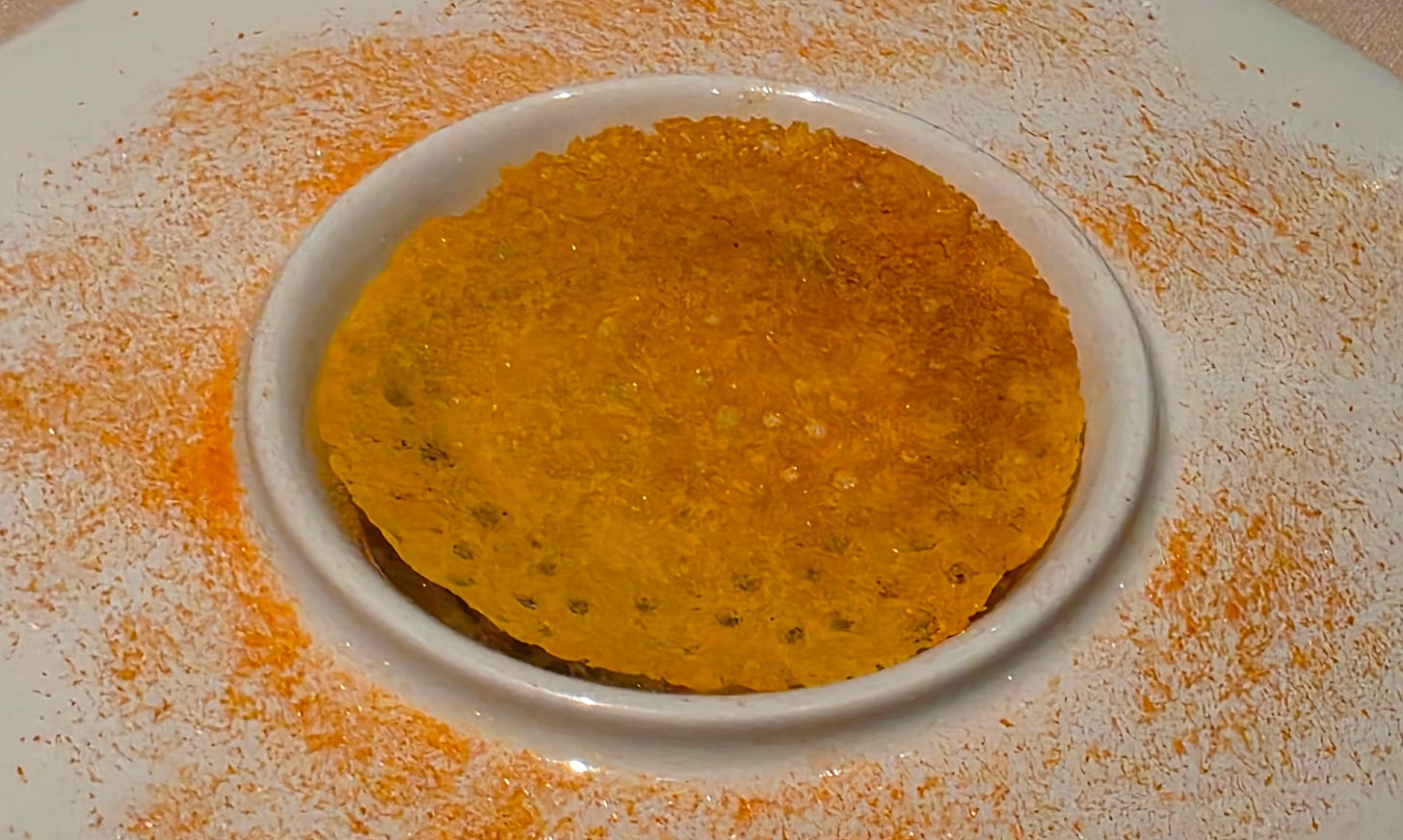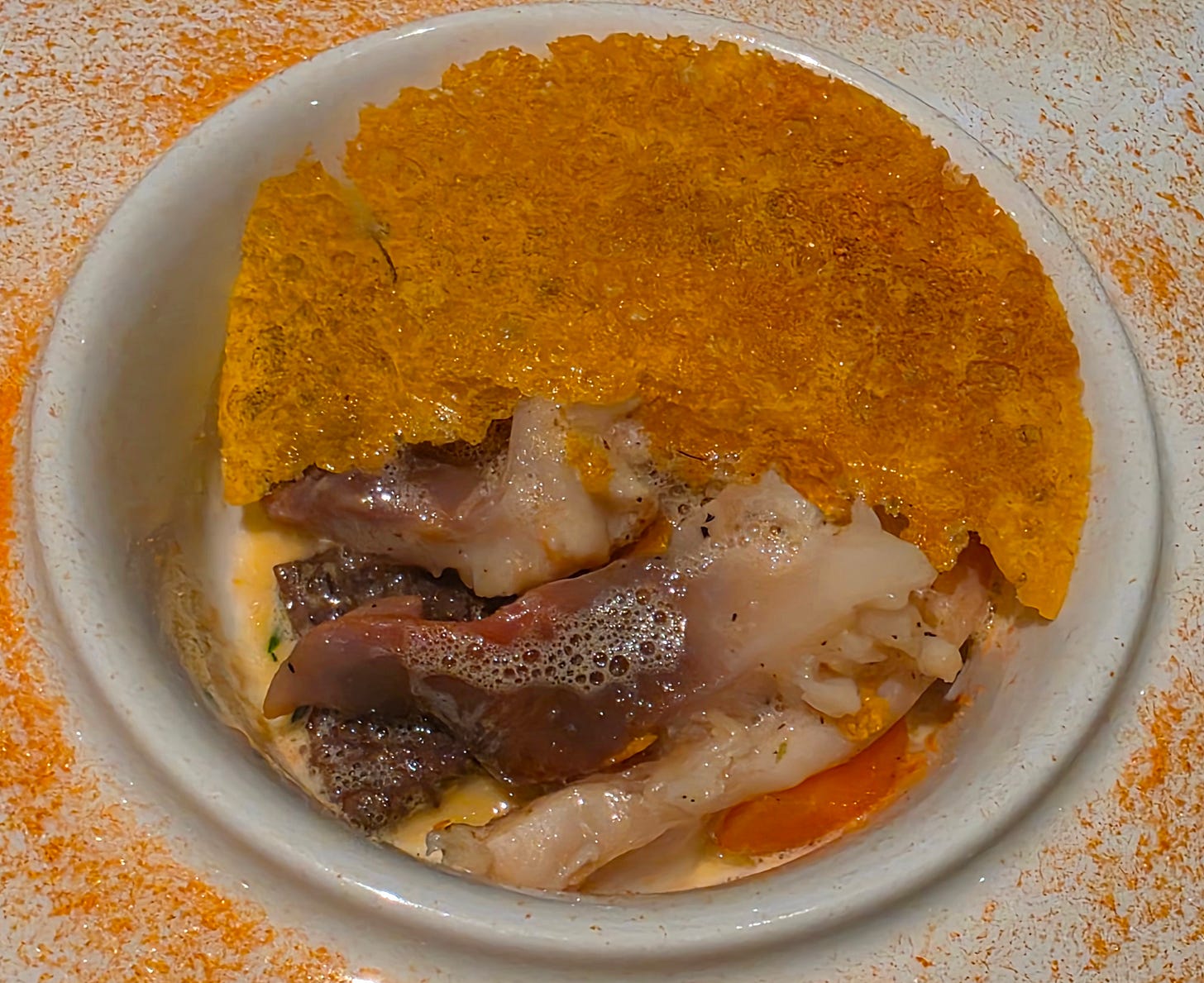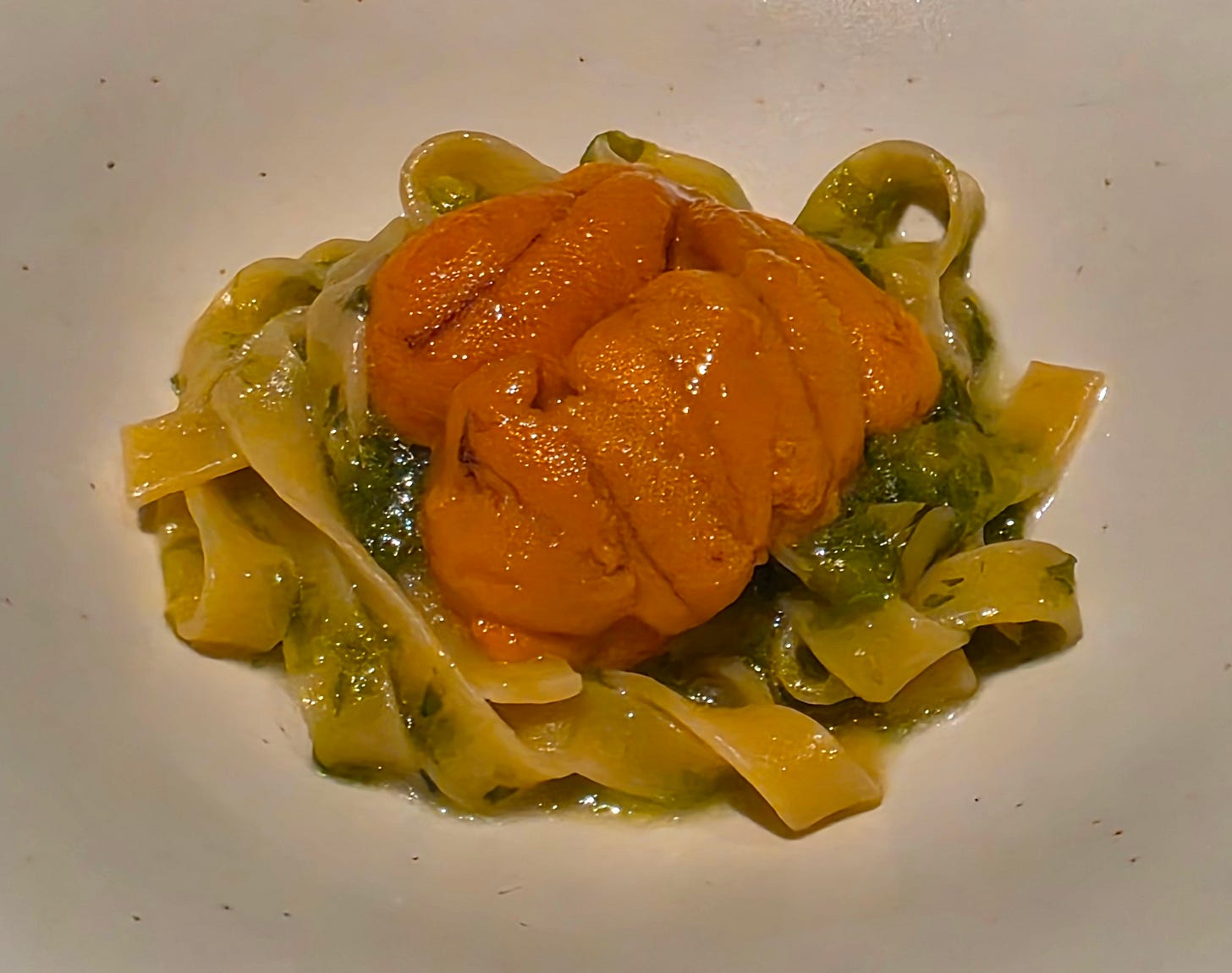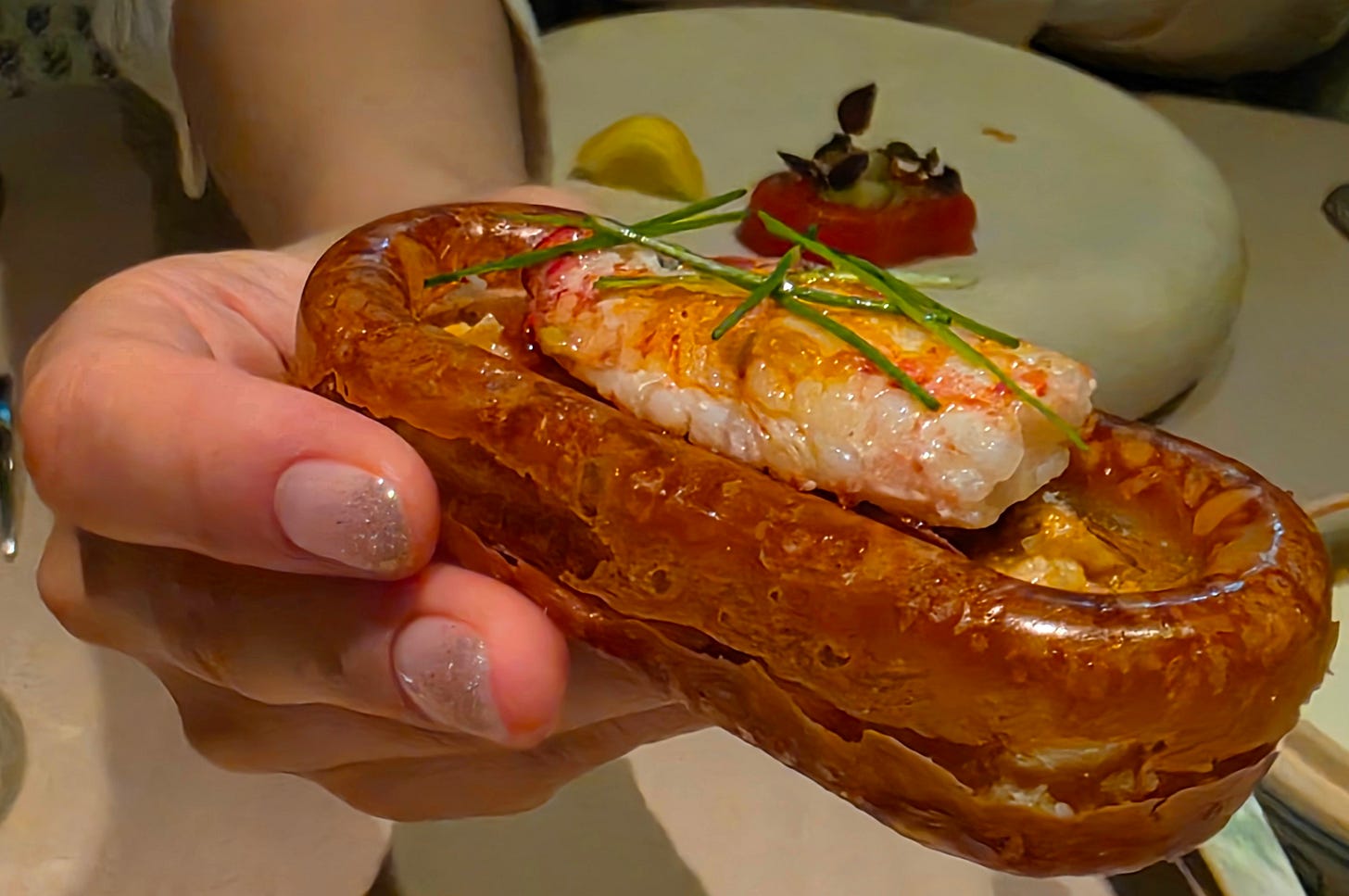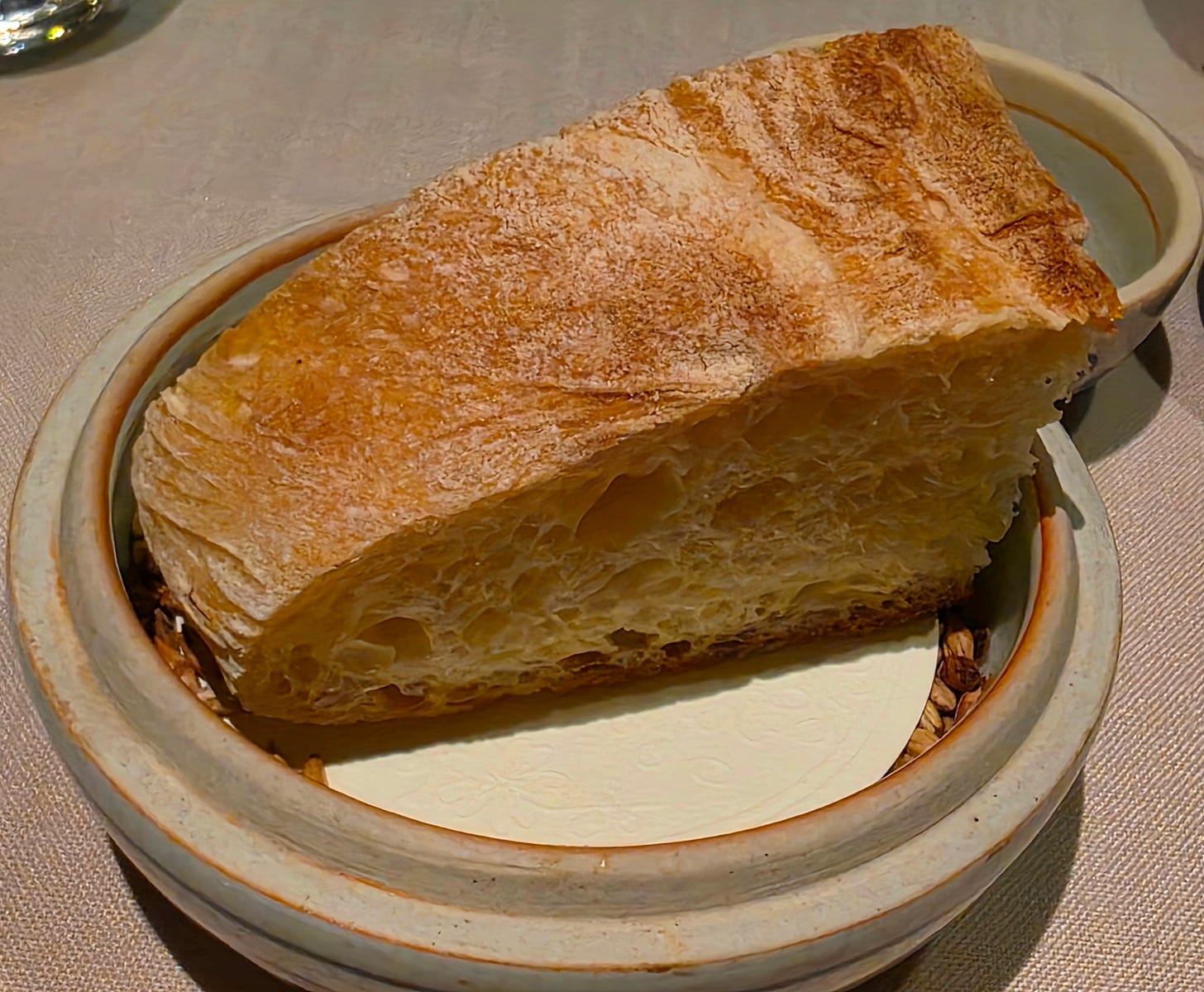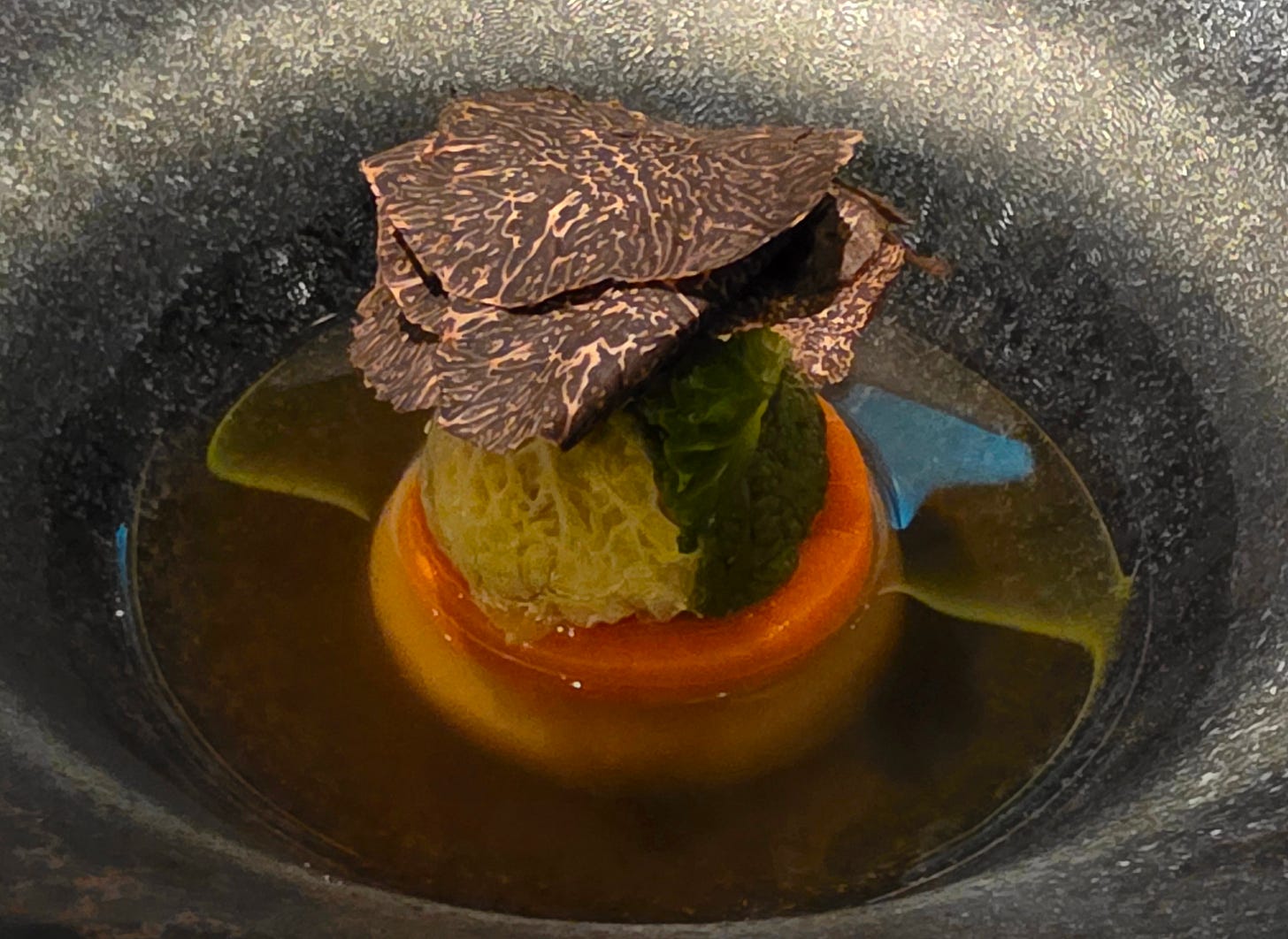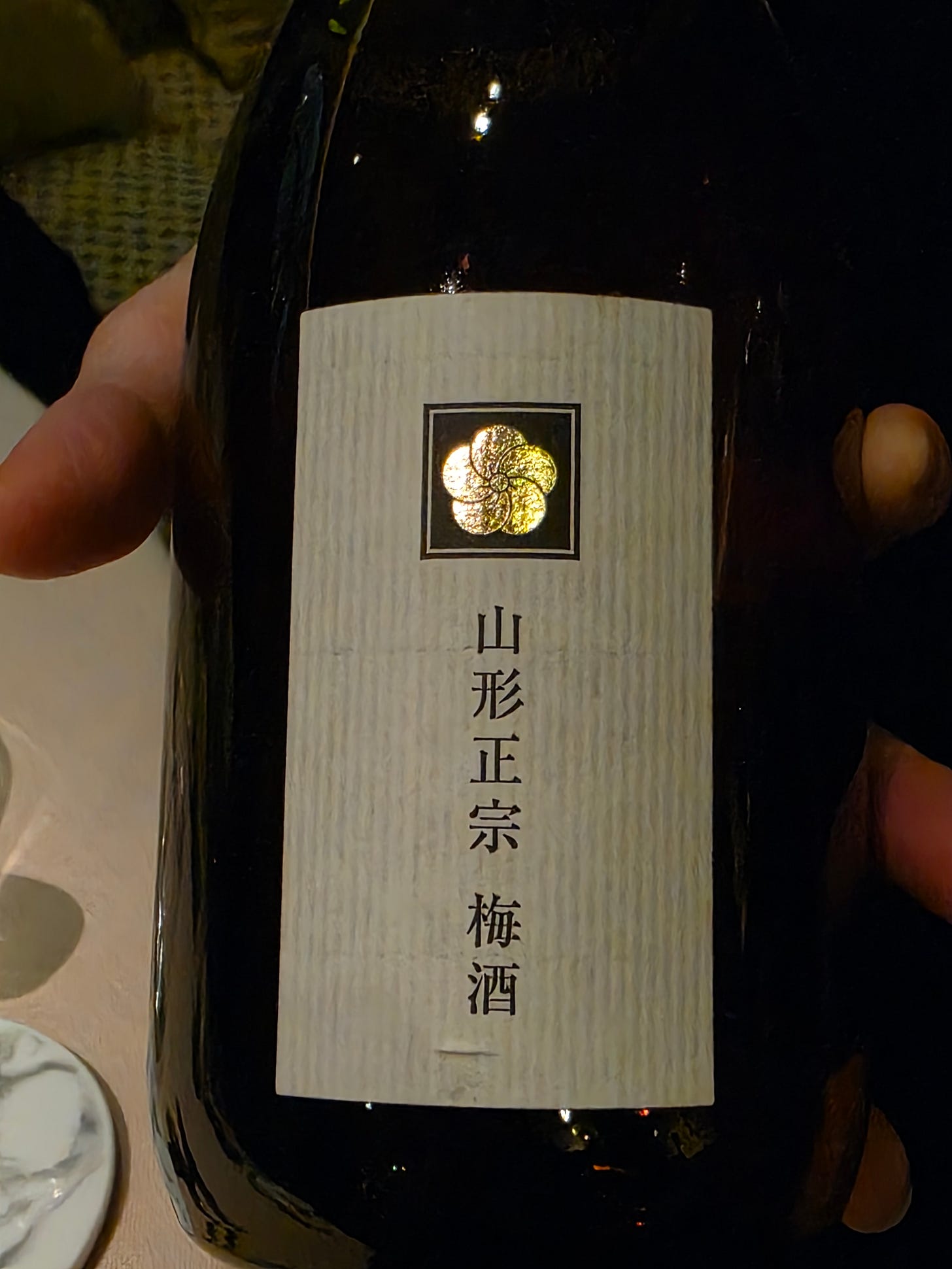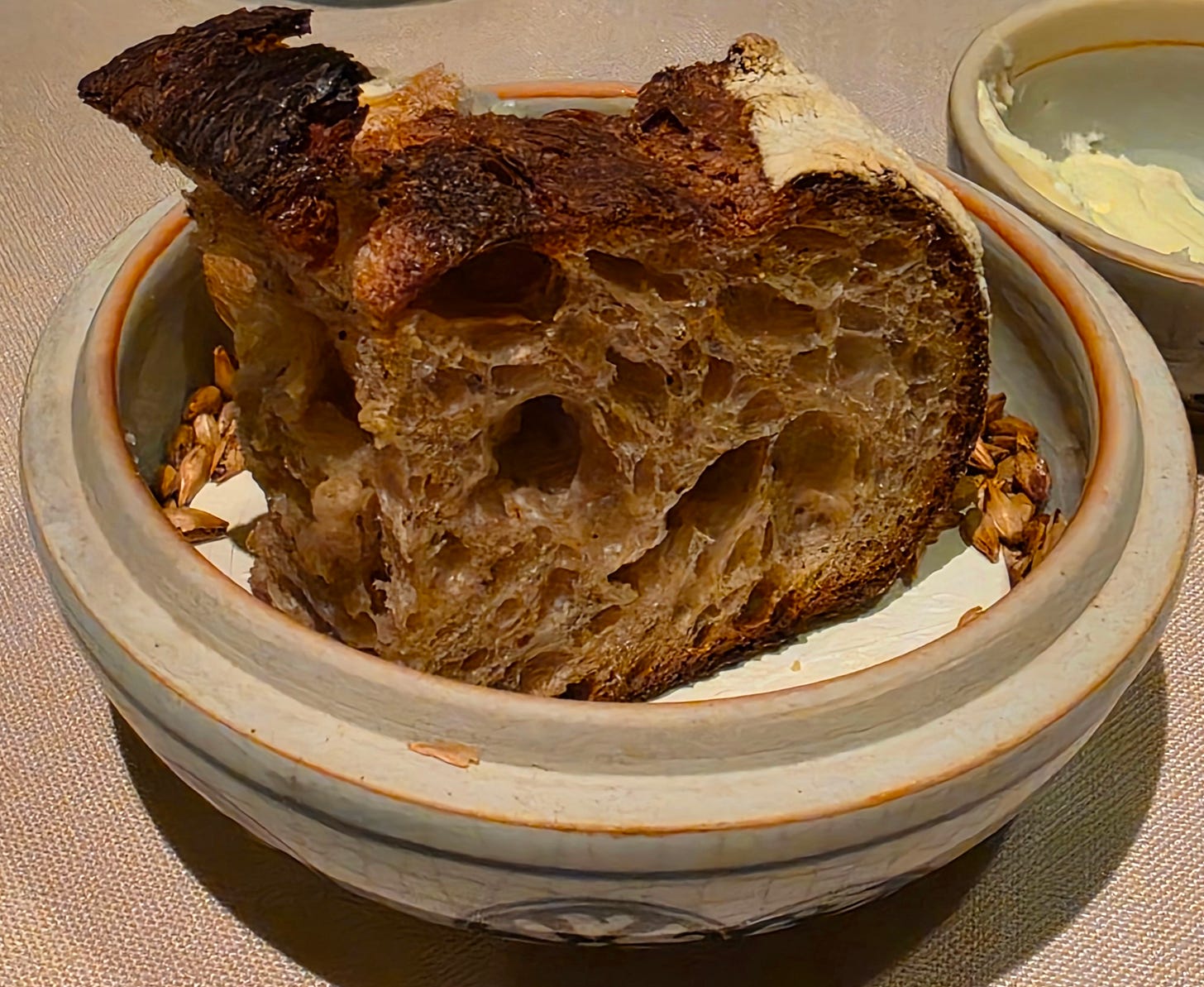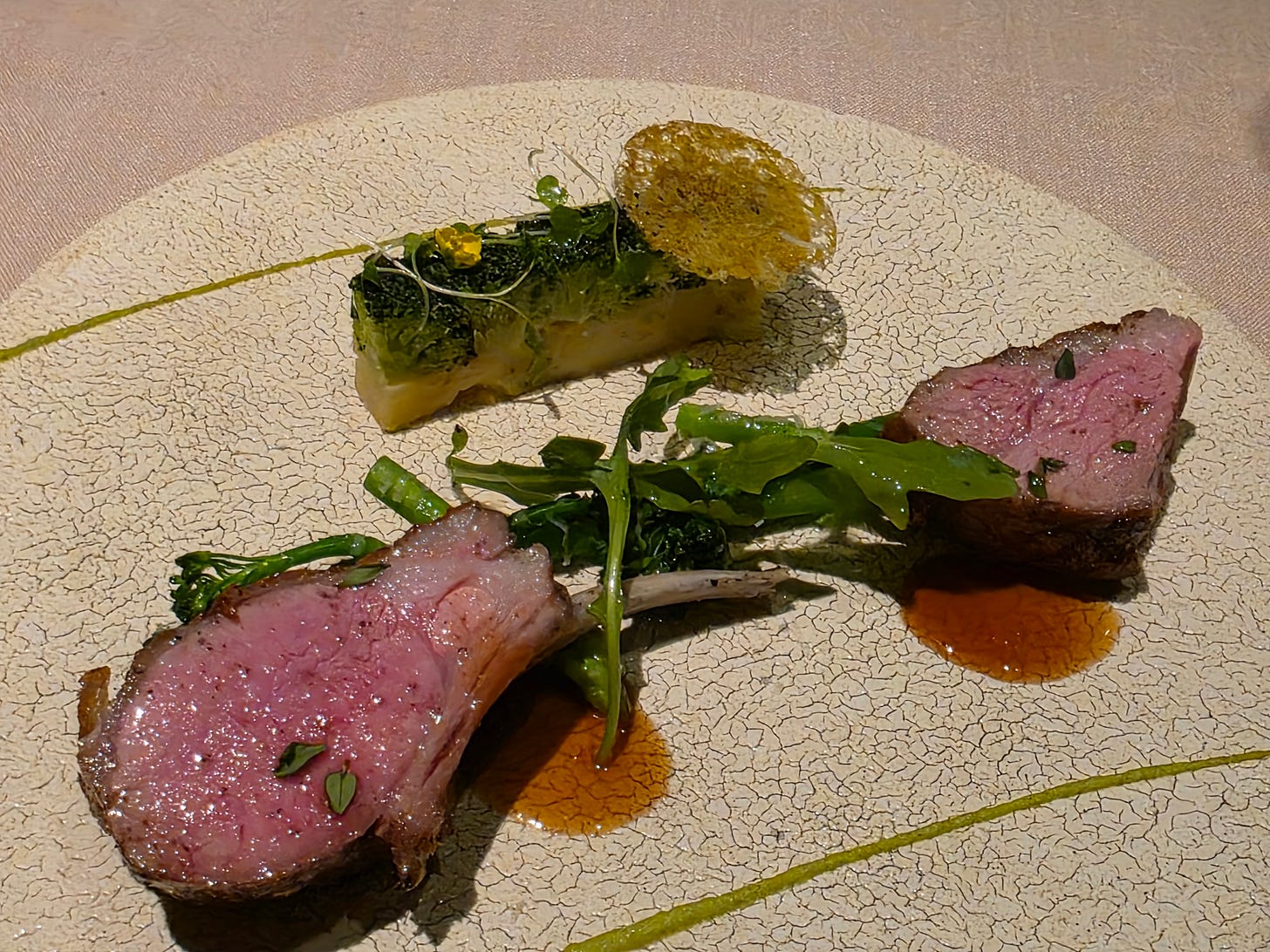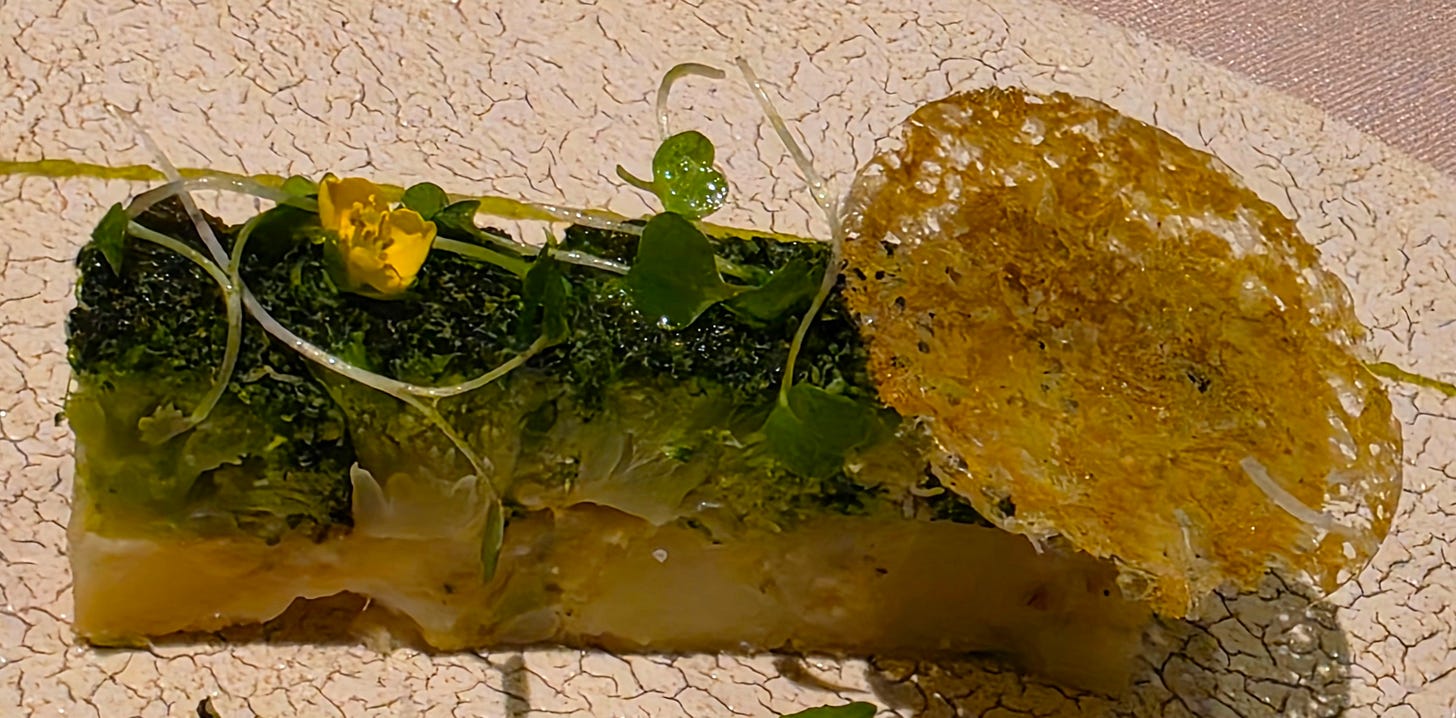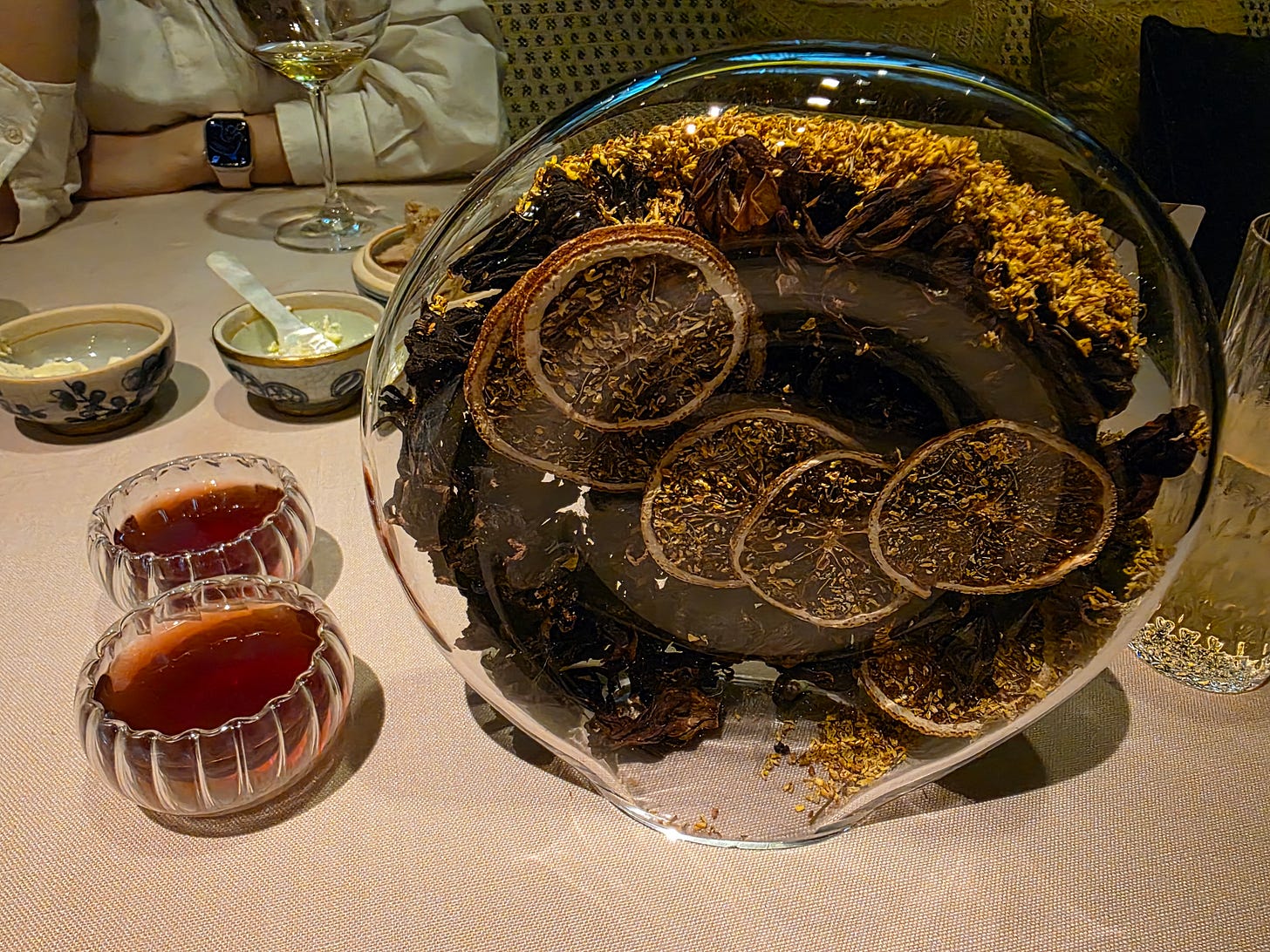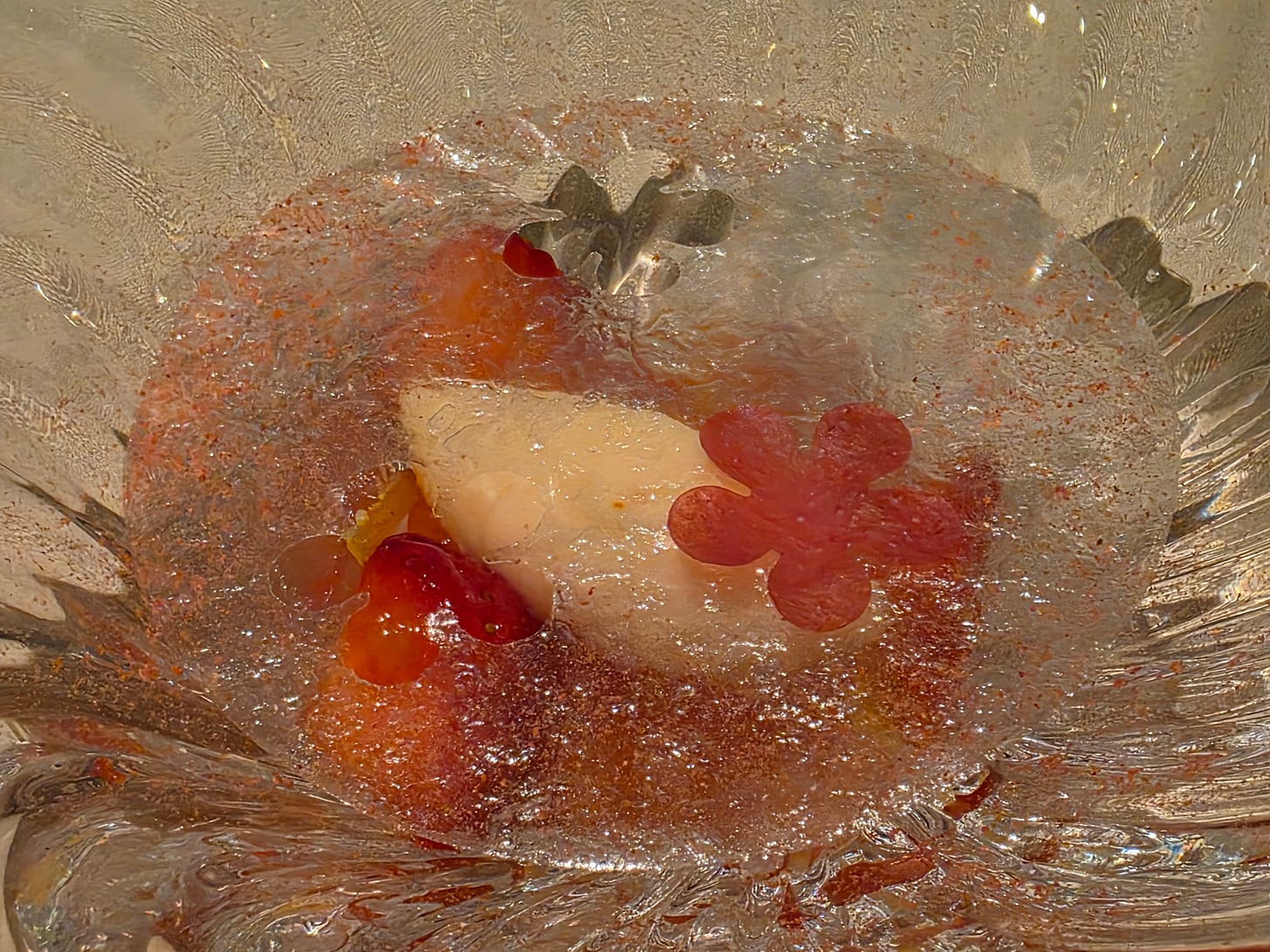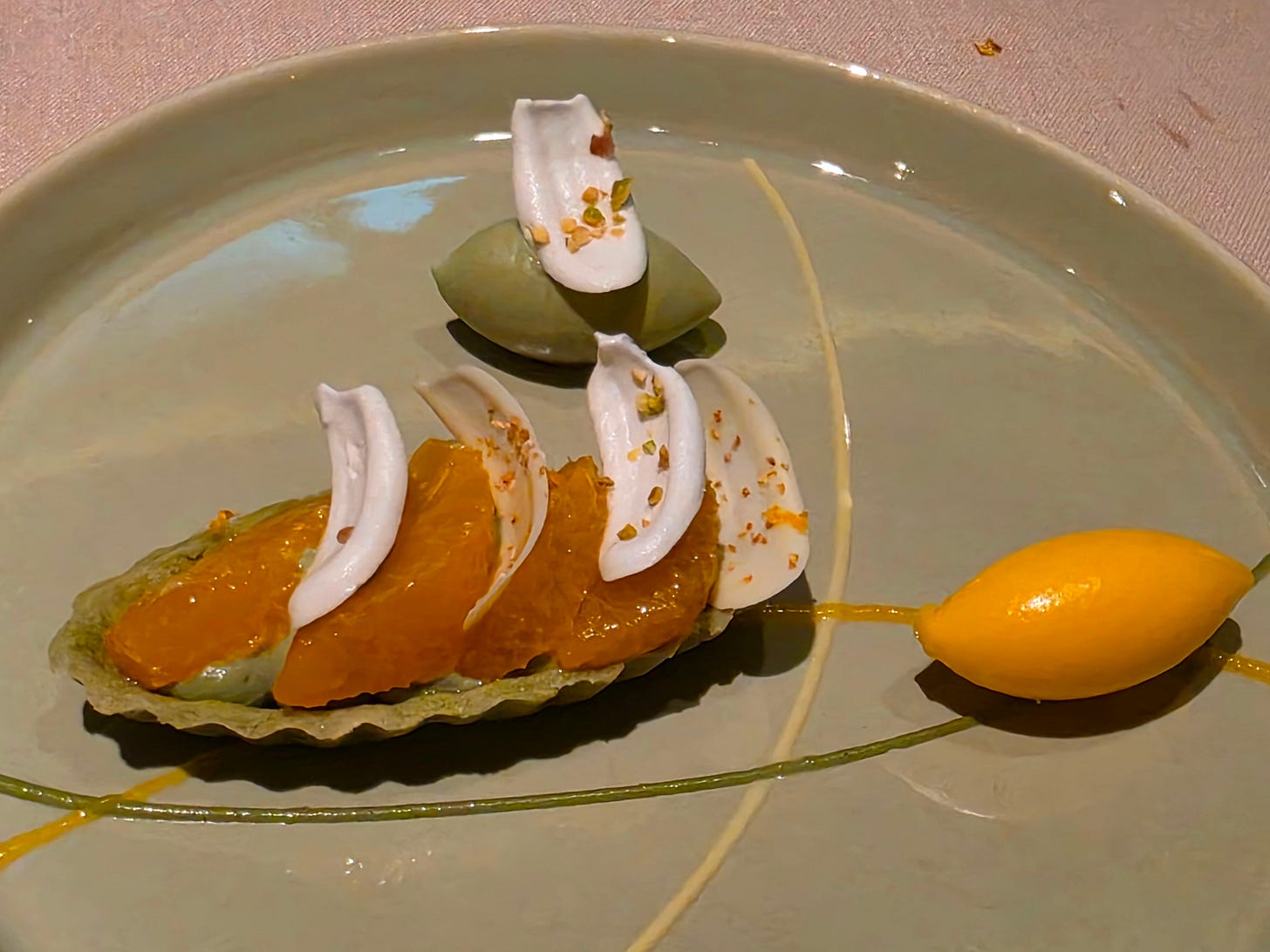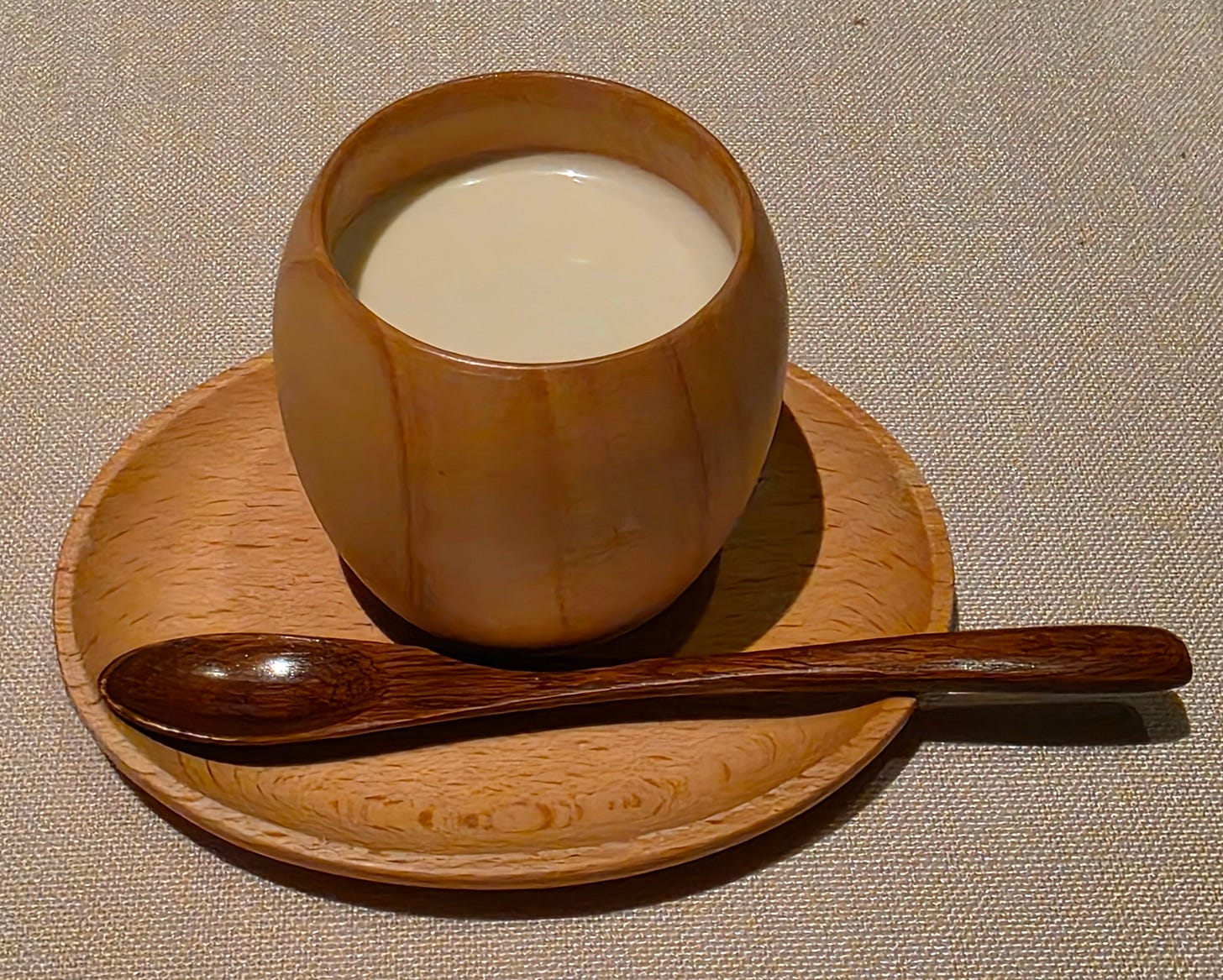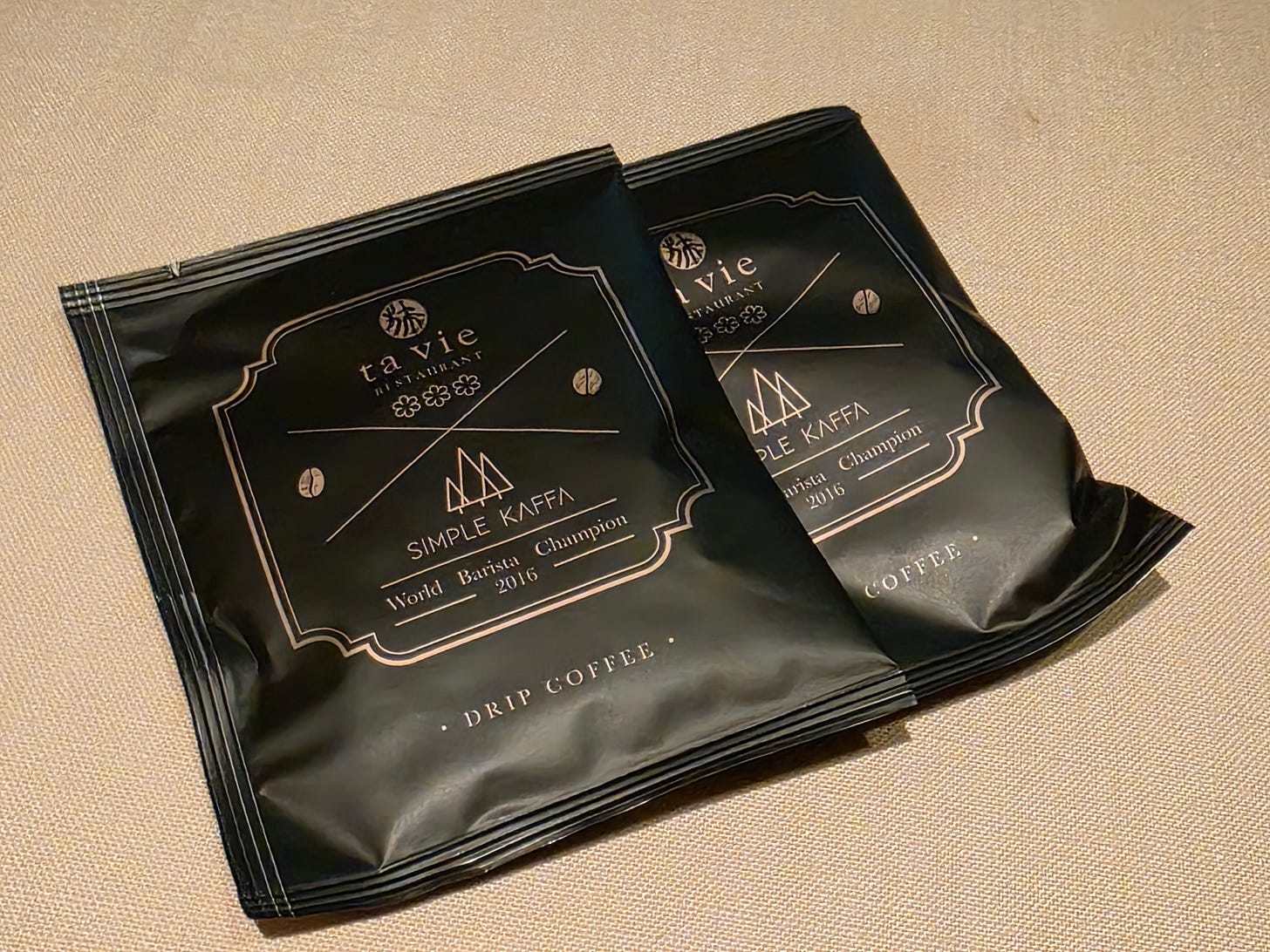After the disaster at Octavium, I decided to visit a reliable restaurant that I knew would be outstanding. I have been to Ta Vie once before, in 2022, and decided to return for its ten-year anniversary. The restaurant’s name carries a dual meaning: “Ta Vie” translates to “your life” in French, while it echoes the Japanese word “tabi,” meaning “journey,” reflecting the culinary voyage it offers diners through its seasonal, ingredient-driven tasting menus.
When I normally hear fusion, it’s a huge red flag to avoid the restaurant. One of the very few exceptions are French and Japanese cuisine that seem to mesh very well together. Whereas Japanese cuisine can be quite subtle, focusing on simplicity and highlighting the key ingredients, French cuisine focuses a lot of refined technique, bold flavours and elaborate saucing.
I’ve seen this combination brilliantly before, at La Biographie or at my past visit to Ta Vie, but French and Japanese fusion can still be very hit and miss. Moliere Montagne had decent food, but was otherwise largely unremarkable, Sezanne was an amazing experience, but the hairy crab menu struck me as being closer to Chinese cuisine than Japanese, and Kioku by Endo was pretty good but gave me more of a Mediterranean feel than classical French.
Ta Vie opened its doors in 2015 under the vision of its executive chef, Hideaki Sato. Within six months of opening, the restaurant earned its first Michelin star, a testament to Chef Sato’s skill and dedication. The following year, in 2016, it was promoted to two stars, and after an eight-year journey marked by persistence and refinement, it achieved its third Michelin star in 2023, a distinction it has held onto until now.
The restaurant’s evolution mirrors Sato’s own culinary philosophy of “pure, simple, and seasonal”. Over the years, Ta Vie has weathered challenges and during the pandemic, Chef Sato used the downtime to deepen his connection to Hong Kong’s culinary landscape, notably dedicating himself to mastering the art of Peking duck—a dish that, while not featured on Ta Vie’s menu, exemplifies his relentless pursuit of perfection. In 2024, Ta Vie temporarily closed for renovations after nine years of operation, reopening in September with a refreshed interior and a renewed focus on its signature style.
Chef Sato, a native of Nagano, Japan, is the driving force behind Ta Vie. His culinary journey is a blend of French and Japanese influences, shaped by years of training and bold career decisions. Sato initially honed his skills in French cuisine, working in various French restaurants in Japan. At the age of 32, he made a pivotal shift, deciding to immerse himself in Japanese culinary traditions under the mentorship of Chef Seiji Yamamoto at the three-Michelin-starred Nihonryori RyuGin in Tokyo. This experience profoundly influenced his approach, blending the precision of Japanese techniques with the elegance of French cooking.
In 2012, Sato moved to Hong Kong to serve as head chef of Tenku RyuGin, the first overseas outpost of RyuGin. Under his leadership, the restaurant earned two Michelin stars within six months, showcasing his ability to adapt and excel in a new market. After leaving the restaurant, Sato struck out on his own to open Ta Vie in 2015, where he could fully realize his vision of a cuisine that highlights high-quality Asian ingredients—particularly from Japan—through modern French techniques. At Ta Vie, Sato is deeply involved in both the kitchen and front-of-house operations, personally presenting dishes to diners, a rarity for a chef of a three-star establishment. His wife, Hiromi-san, manages the front of house, making Ta Vie a family endeavor.
Ta Vie’s understated ambiance gives off a bit of a colonial Shanghainese vibe, with a black and white motif —dark interiors, cocoon-like booths separated by ornate room dividers —complements its culinary offerings, creating an intimate dining experience in the tiny seven table restaurant.
We started off with a carafe of their signature cold brewed Rose Monkey Pick Oolong tea. Ancient legend had it that the best tea leaves were grown on the tea bushes high up on the needle-like Wuyi Mountain. The steep cliffs made it was impossible for humans to pick by hand, so they trained pet monkeys to pick the leaves off the remote tea bushes. In reality, it’s more of a marketing thing, and while neat, it was otherwise indistinguishable from a fairly mild cold-brewed oolong.
Ta Vie only has one choice of menu, which is their seven course tasting menu. This is one place where I’m definitely happy for Chef Sato to decide what I’m going to eat.
First came the homemade bread, which is made each morning at the restaurant. A small loaf of sourdough, served piping hot, made from Hokkaido wheat and wild yeast found on rice bran to ferment the dough. Alongside the bun came the whipped butter, also made in house each day, and a light ricotta cheese in a bath of olive oil.
The first course was a clam fricassee with wild morel mushrooms from Yunnan, baby carrots cooked in a clam jus with bacon and butter, topped with a dehydrated carrot biscuit and sprinkled with carrot powder. Clam jus, bacon, butter - this had all the elements of a classic clam chowder, with carrot substituting for the standard mirepoix, and a lack of thickener - roux or dairy. A very simple preparation with a giant piece of clam, barely cooked and amazingly tender, in a buttery, rich broth. I could identify each ingredient by taste and each was outstanding on its own as well as together. Absolutely phenomenal and one of the highlights of my night!
Next up was a signature dish at Ta Vie, a freshly made pasta in a briny butter seaweed sauce, topped with a generous helping of Hokkaido sea urchin (uni). Again, a very simple dish with very few ingredients. I’m fairly sure it was just the the pasta, butter, seaweed and uni and each ingredient could be clearly identified on the palate and worked extremely well together. The pasta itself was mildly salted and buttered with the aonori sauce and served as a platform to highlight the creamy richness of the uni. There was probably as much uni on the plate as pasta!
Third came my single favourite dish of the night. Tapping into a bit of Spanish influence, they took the absolutely best part of any paella, the socarrat - that crunchy browned layer of rice at the bottom of the pan and managed to form a hollow shell purely of socarrat, filling the middle with a paste made from the innards of a Japanese Horsehair crab (kegani) mixed with just a hint of saffron, topped with a single piece of crab meat and a sprinkling of tiny chives. The socarrat tart was extremely light and fragile, while retaining a characteristic crisp and crunch you’d expect from a good paella crust, contrasting with the gooey, slightly bitter crab paste. Downed in two bites, it was absolutely divine! If only Ta Vie had an a la carte menu, I could’ve finished a lot more of these.
The crab tart was served with a similarly shaped tomato salad as a palate cleanser. Deeply concentrated tomato flavour, slightly tart, intensely juicy and a little herbal, topped with a little bit of cucumber brunoise for texture and a few microgreens.
Another homemade white bread came next, also made of Hokkaido wheat flour, but the dough was left to slow ferment, creating an incredibly light and crispy crust with a springy, chewy center.
The fourth course was Ta Vie’s take on a “Pot au feu”, a classic French dish of boiled meat and vegetables. We were presented with a tower of vegetables, with a slice of daikon radish as base, a layer of carrot, then cabbage leaf wrapped pork and chicken meatball topped by a single cabbage shoot and a deep pile of black truffle. Around the tower was a stunningly clear chicken consommé. Simple ingredients, simply prepared and simply presented with each ingredient speaking for itself. The attention to detail was stunning here, the meatball underneath the cabbage leaf was precut into four quarters so a spoon could easily tear through each layer of the tower, pick up a quarter meatball, a bit of the soft root vegetables and some of the consommé into one perfect mouthful with every ingredient on the spoon.
At this point, my commitment to a dry dinner had lasted about an hour before I gave in and decided to go with a umeshu highball. They explained the difference between vodka-based umeshu, shochu-based umeshu and sake-based umeshu, but I figured they’d know better than me, and let them decide which one was best.
Before the main, they brought out a third kind of homemade bread. This one was a bit darker, more of a country-style sourdough. I was starting to get full, and to preserve my appetite for the main, I regretfully decided to pass on this one.
The main was an incredibly tender roasted rack of lamb, served with a broccolini salad dressed in a sour lemon confit dressing. On the side was a broccolini and potato ecrase, French for “crushed”, a layer of potato pressed together with tender broccolini florets to form a soft, but dense brick, topped with a dehydrated broccoli chip. The lamb was fall apart on fork tender, and the acidity from the lemon confit helped cut through the fattiness of the lamb chop.
Before starting dessert, they surprised us with a liquid palate cleanser, a cold tea made from roselle, osmanthus and chrysanthemum flower bud, dried orange peel and brown sugar. Refreshing and giving us a bit of a break before the cold desserts.
The first dessert was a combination of fresh fruits - strawberries and blood orange slices set in a blood orange jelly, topped with a yoghurt whey ice cream and a paper thin layer of sugar with three small stars cut out of it. Just a variety of textures and flavours all interacting really well together.
The second dessert was a pistachio tart filled with a pistachio cream, topped with juicy slices of tangerine and alternating flakes of crisp meringue and white chocolate. On the side was a single scoop of tangerine sorbet and pistachio ice cream. The highlight here was the juiciness of the tangerine slices - each bite just bursting with flavour. The pistachio tart itself was a bit nutty, but a great end of the meal!
Another surprise! Instead of petit fours, they did a tiny pandan panna cotta. Normally, when I see pandan flavoured foods, I expect something dyed neon green, but this panna cotta was just slightly off white, much denser than a normal panna cotta, and gave a deeply herbal aroma and concentrated flavours of pandan. An absolute hit, but not a flavour I tend to associate with Japanese or French cooking. Much more common in Southeast Asia.
Finally, as we were leaving, two bags of pour-over coffee for tomorrow morning, done as a collaboration between Ta Vie and Simple Kaffa, an artisanal coffee shop in Taiwan that’s won repeated accolades year after year.
Overall, this has been one of the absolute best meals I’ve had this year. I knew Ta Vie would be reliably amazing, but I’ve also noticed that my second visit to a restaurant often leaves me a bit disappointed, as the novelty of the first visit has worn off and I know what to expect.
Not so with Ta Vie. My second visit was even better than the first, and Ta Vie’s focus on simplicity, essence and distillation of each ingredient elevates it above the many other amazing restaurants I’ve been to this year. There is no fancy saucing, flambés, gold foil or theatrics here. Just the very best ingredients they could possibly source at the very height of their season, prepared simply, presented simply and letting the food do all the talking.
Total damage: 7200 HKD/2 people.

